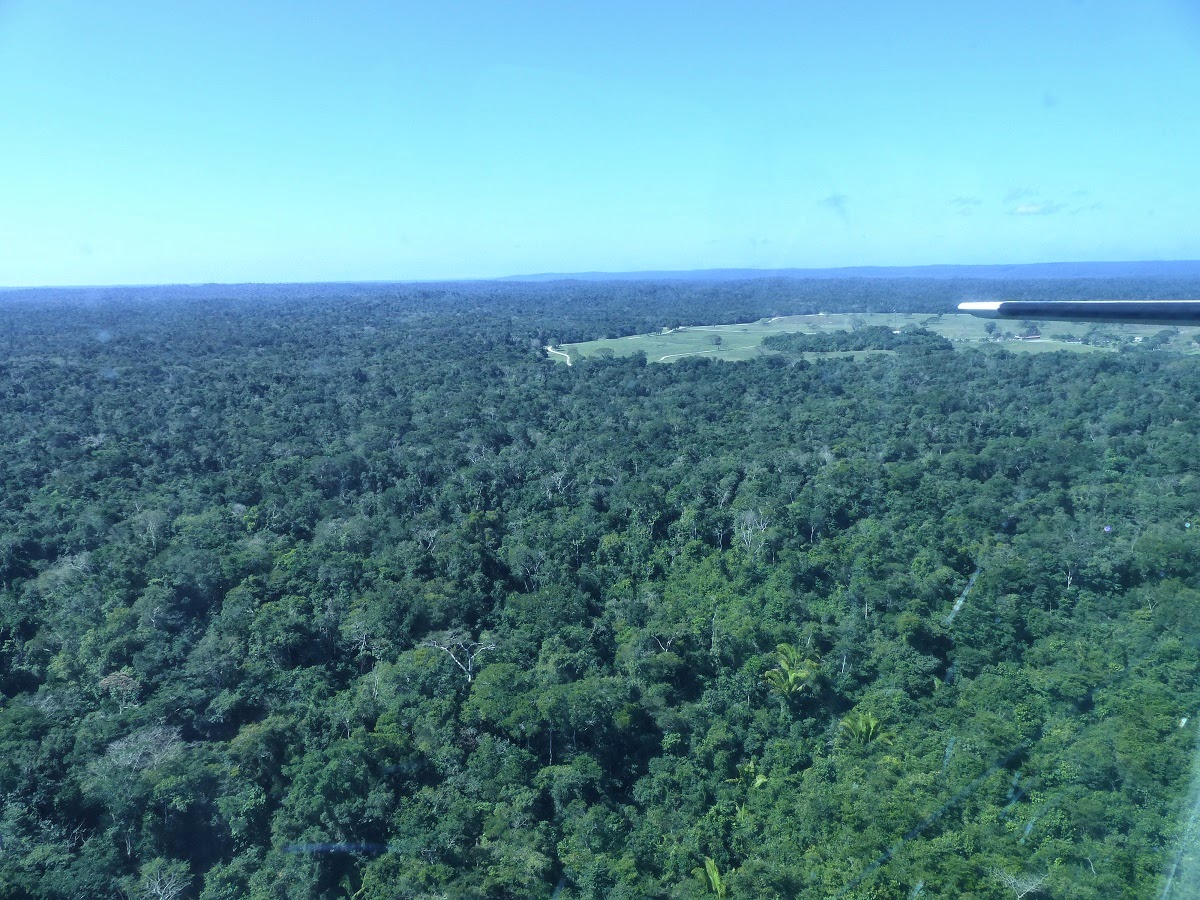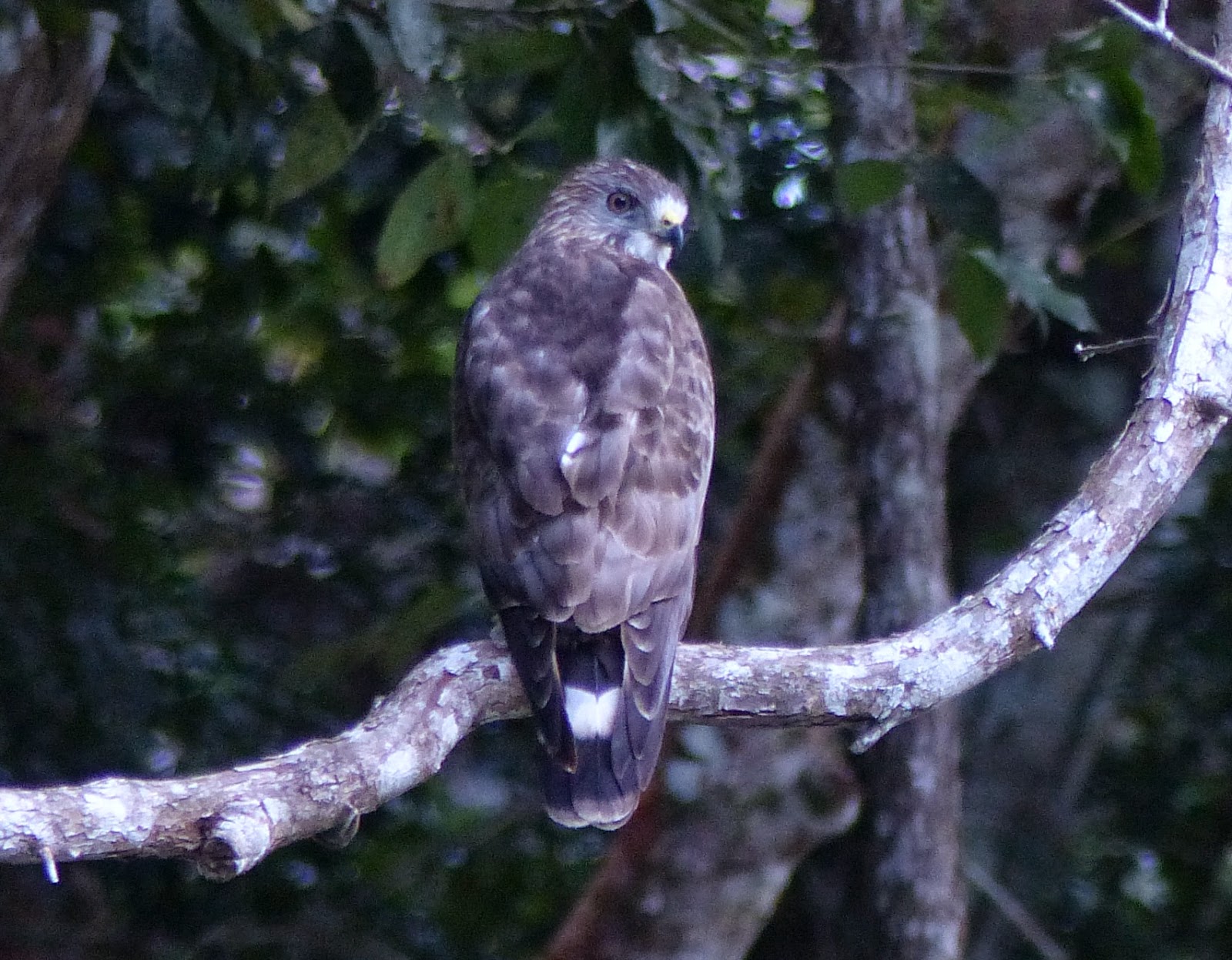 |
| Gallon Jug from the air - looking SSW |
Chan Chich is Mayan for “little bird”, and there are lots of them on the property – some 340 species*. Opened in 1988, this private reserve extends over 52,000 ha and adjoins the even larger 93,432 ha Rio Bravo Conservation and Management Area run by
Programme for Belize. Most of this area, with the exception of 1,200 ha of cleared agricultural land at Gallon Jug, is cloaked in humid forest of various kinds. Access to the reserve is by air or a private unsurfaced road.
I have been visiting Chan Chich annually since first being shown the place by Rick Taylor in 2001. In the 1990s, Rick had continually regaled me with stories of this mythical place, accounts in which Chan Chich was typically accompanied by words like “the best jungle lodge in the world” or “wait until you see...”. Perhaps the most remarkable thing about Chan Chich is that it has changed so little over the years. Sure enough, the original builders (including Norm, the latter-day barman) have moved on, the incredibly birdy dump has been filled in (for health reasons), the mahogany poles of the suspension bridge have been replaced by steel, a few extra cabins have been built, and our old guides' quarters have been crushed by a tree toppled by Hurricane Richard. But the atmosphere of the pace remains the same, in large part because the staff date from the 1980s and 1990s.
 |
| Jaguar Panthera onca |
We typically drive in to Chan Chich from Crooked Tree, a trip that takes us about five hours. This may seem like a poor use of birding time, but in fact the drive in has provided some extraordinary sightings over the years, from huge clouds of migrating Barn Swallows
Hirundo rustica to Yucatán speciality birds like Black-throated Bobwhite
Colinus nigrogularis, and from scarce wintering waterfowl feeding in the flooded rice fields at Blue Creek to a Jaguar
Panthera onca flashing across the road. In fact, this is one of the best places in the world to encounter Jaguars. It also gives an idea of the size and relative isolation of this conservation area and provides an opportunity to see the Mexican and Mennonite villages along the way. The sterile Mennonite lands contrast starkly with the lush, vibrant humid forest. Over the years, the forest boundary has been pushed back several kilometres by Mennonite bulldozers to make way for pastureland and soy bean fields.
%2Bedit.JPG) |
| Adult Broad-winged Hawk Buteo platypterus |
This year the drive in is fairly quiet as far as Blue Creek, but as soon as we pass the Rio Bravo barrier the action begins. A toilet break gives as close looks at two White-necked Puffbirds
Notharchus hyperrhynchus in a roadside
Cecropia. These are often hard to find at Chan Chich but we will end up seeing five by the end of the tour. As we study them, a Black-and-white Hawk-Eagle
Spizaetus melanoleucus soars over the road showing its characteristic white leading edge while a Black Hawk-Eagle
S. tyrannus sails in the opposite direction. A little further on, Moez spots an adult Broad-winged Hawk
Buteo platypterus, an uncommon and thinly-spread winter visitor to these forests.
Continued...
* Steve Smith and I are compiling a checklist of the birds of Chan Chich based on specimens and documented sight records. We currently have verified records for some 340 species.
No comments:
Post a Comment